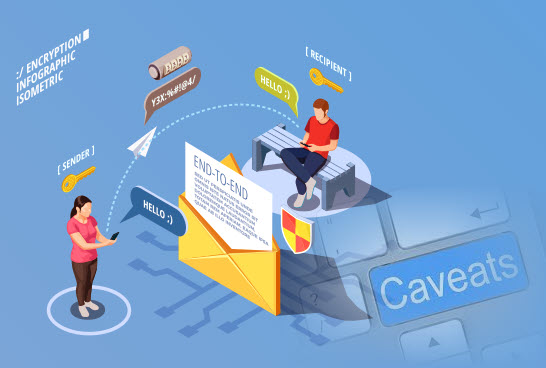
[Học tiếng Anh] "Go with caveats" là gì?
Last updated: August 01, 2025 Xem trên toàn màn hình
- 01 Nov 2021
 Phân tích quy trình hiện tại (AS-IS) là gì? 77/924
Phân tích quy trình hiện tại (AS-IS) là gì? 77/924 - 01 Aug 2022
 20 bài học kinh nghiệm rút ra từ Tam Quốc Diễn Nghĩa 47/922
20 bài học kinh nghiệm rút ra từ Tam Quốc Diễn Nghĩa 47/922 - 03 Nov 2022
 BAU (Business-As-Usual) là gì? 25/1786
BAU (Business-As-Usual) là gì? 25/1786 - 31 Jul 2024
 [Học tiếng Anh] "Virtuous circle" và "Vicious cycle" là gì? 22/1453
[Học tiếng Anh] "Virtuous circle" và "Vicious cycle" là gì? 22/1453 - 03 Jul 2024
 [Học tiếng Anh] "North star" - Tại sao người Anh/Mỹ hay đề cập "ngôi sao phương bắc" trong các câu chuyện hàng ngày? 18/739
[Học tiếng Anh] "North star" - Tại sao người Anh/Mỹ hay đề cập "ngôi sao phương bắc" trong các câu chuyện hàng ngày? 18/739 - 08 Dec 2022
 Phân biệt Cookbook, In a nutshell và Dummies 18/380
Phân biệt Cookbook, In a nutshell và Dummies 18/380 - 14 Dec 2023
 "Garbage in, garbage out" là gì? 18/866
"Garbage in, garbage out" là gì? 18/866 - 26 Jan 2023
 [Học tiếng Anh] Các cụm từ thú vị "ad-hoc", "quote unquote", "per se", "Status quo". 15/897
[Học tiếng Anh] Các cụm từ thú vị "ad-hoc", "quote unquote", "per se", "Status quo". 15/897 - 01 Nov 2023
 Lệnh thay đổi kỹ thuật (Engineering Change Order - ECO) là gì? 15/1406
Lệnh thay đổi kỹ thuật (Engineering Change Order - ECO) là gì? 15/1406 - 22 Nov 2023
 Phân biệt tư duy hệ thống khác với tư duy thiết kế 13/371
Phân biệt tư duy hệ thống khác với tư duy thiết kế 13/371 - 01 Feb 2023
 [Học tiếng Anh] Phần mềm và nhạc rock có mối liên hệ như thế nào? 13/344
[Học tiếng Anh] Phần mềm và nhạc rock có mối liên hệ như thế nào? 13/344 - 28 Dec 2023
 "Watered-down version" và "Stripped-down version" là gì? 13/515
"Watered-down version" và "Stripped-down version" là gì? 13/515 - 28 Dec 2023
 "Watered-down version" và "Stripped-down version" là gì? 13/515
"Watered-down version" và "Stripped-down version" là gì? 13/515 - 12 Mar 2024
 [Học tiếng Anh] "What’s the difference between distributors and resellers? " - Phân biệt nhà phân phối với nhà bán lại? 13/513
[Học tiếng Anh] "What’s the difference between distributors and resellers? " - Phân biệt nhà phân phối với nhà bán lại? 13/513 - 07 Mar 2024
 [Học tiếng Anh] "Not even close" là gì? 13/1020
[Học tiếng Anh] "Not even close" là gì? 13/1020 - 01 Aug 2024
 Giải mã các thành ngữ về "may mắn" và "rủi ro" trong tiếng Anh 13/675
Giải mã các thành ngữ về "may mắn" và "rủi ro" trong tiếng Anh 13/675 - 22 Mar 2023
 Bootstrapping là gì? 12/294
Bootstrapping là gì? 12/294 - 06 Dec 2023
 Practice khác với routine như thế nào? 12/271
Practice khác với routine như thế nào? 12/271 - 09 Dec 2023
 Phần mềm Best-of-class là gì? 11/175
Phần mềm Best-of-class là gì? 11/175 - 01 Dec 2022
 Business Critical là gì? 11/537
Business Critical là gì? 11/537 - 21 Jan 2022
 SSO (Single Sign On) là gì? Bạn đã hiểu đúng và đẩy đủ vè chìa khóa thông minh SSO? 11/391
SSO (Single Sign On) là gì? Bạn đã hiểu đúng và đẩy đủ vè chìa khóa thông minh SSO? 11/391 - 01 Aug 2023
 [Học tiếng Anh] "To be very hip" - Rất là sành điệu 11/262
[Học tiếng Anh] "To be very hip" - Rất là sành điệu 11/262 - 07 Aug 2023
 Fubar là gì? 11/565
Fubar là gì? 11/565 - 05 Jan 2024
 Value-Added Distributors (VAD) là gì? 10/688
Value-Added Distributors (VAD) là gì? 10/688 - 05 Sep 2023
 Học tiếng Anh: Hiểu thế nào vè cụm từ "like for like" (L4L)? 10/397
Học tiếng Anh: Hiểu thế nào vè cụm từ "like for like" (L4L)? 10/397 - 01 Aug 2024
 [Học tiếng Anh] "Hack" được hiểu như thế nào trong từng ngữ cảnh? 9/451
[Học tiếng Anh] "Hack" được hiểu như thế nào trong từng ngữ cảnh? 9/451 - 03 Apr 2023
 The Cold Start Problem and Network Effect /Khởi đầu nguội và hiệu ứng mạng 9/307
The Cold Start Problem and Network Effect /Khởi đầu nguội và hiệu ứng mạng 9/307 - 01 May 2024
 [Học tiếng Anh] "Boil the Ocean" - Tại sao nói "đun sôi đại dương" là việc làm lãng phí? 8/323
[Học tiếng Anh] "Boil the Ocean" - Tại sao nói "đun sôi đại dương" là việc làm lãng phí? 8/323 - 01 Apr 2025
 CTO ra quyết định như thế nào? 8/36
CTO ra quyết định như thế nào? 8/36 - 24 Feb 2023
 [Học tiếng Anh] Cross-cutting skills - Kỹ năng xuyên suốt 8/280
[Học tiếng Anh] Cross-cutting skills - Kỹ năng xuyên suốt 8/280 - 19 Oct 2022
 Thành ngữ tiếng Anh thú vị hàng ngày ở công sở 8/608
Thành ngữ tiếng Anh thú vị hàng ngày ở công sở 8/608 - 01 Nov 2021
 Knowldge Base là gì? 7/164
Knowldge Base là gì? 7/164 - 02 Aug 2022
 BVP (Billable Viable Product) là gì? 7/83
BVP (Billable Viable Product) là gì? 7/83 - 01 Dec 2022
 "Strike a balance" nghĩa là gì? 7/415
"Strike a balance" nghĩa là gì? 7/415 - 02 Jan 2024
 Domain Engineering là gì? 7/456
Domain Engineering là gì? 7/456 - 12 Jul 2023
 Vì sao ngày càng nhiều dự án phần mềm thất bại? 7/537
Vì sao ngày càng nhiều dự án phần mềm thất bại? 7/537 - 18 Jul 2023
 [Học tiếng Anh] Tiếp cận bất khả tri "agnostic approach" là gì? 6/328
[Học tiếng Anh] Tiếp cận bất khả tri "agnostic approach" là gì? 6/328 - 04 Nov 2023
 [Học tiếng Anh] The "chicken and egg" problem/situation 6/289
[Học tiếng Anh] The "chicken and egg" problem/situation 6/289 - 04 Feb 2024
 [Học tiếng Anh] "Second guess" là gì? 6/698
[Học tiếng Anh] "Second guess" là gì? 6/698 - 03 Dec 2023
 [Học tiếng Anh] Thành ngữ thú vị trong tiếng Anh (phần 2) 6/1009
[Học tiếng Anh] Thành ngữ thú vị trong tiếng Anh (phần 2) 6/1009 - 06 Dec 2023
 Loại phần mềm "fire-and-forget" là gì? 6/292
Loại phần mềm "fire-and-forget" là gì? 6/292 - 02 Nov 2023
 "State-of-the-art product" là gì? 6/282
"State-of-the-art product" là gì? 6/282 - 01 Nov 2022
 Like for like là gì 6/477
Like for like là gì 6/477 - 01 Nov 2022
 Tiếng Anh hàng ngày trong quản lý dự án / Daily English 5/141
Tiếng Anh hàng ngày trong quản lý dự án / Daily English 5/141 - 08 Dec 2023
 Resource Leveling là gì? 5/375
Resource Leveling là gì? 5/375 - 11 Dec 2022
 Sustaining Engineering là gì? 5/312
Sustaining Engineering là gì? 5/312 - 09 Jan 2024
 Domain Knowledge là gì? Ưu và nhược điểm? 5/625
Domain Knowledge là gì? Ưu và nhược điểm? 5/625 - 01 Jan 2024
 Phân tích tổ hợp (Cohort Analysis) là gì? 5/478
Phân tích tổ hợp (Cohort Analysis) là gì? 5/478 - 07 Dec 2022
 Lean Software Development là gì? 5/297
Lean Software Development là gì? 5/297 - 20 Dec 2022
 Bài học quản lý nhân sự từ một trận chung kết bóng đá 5/284
Bài học quản lý nhân sự từ một trận chung kết bóng đá 5/284 - 17 Feb 2025
 Cảnh Giác Mất Tiền Oan Khi Mua Phần Mềm Nước Ngoài: Cái Bẫy Mang Tên “AUTO-RENEWAL” 5/56
Cảnh Giác Mất Tiền Oan Khi Mua Phần Mềm Nước Ngoài: Cái Bẫy Mang Tên “AUTO-RENEWAL” 5/56 - 05 Apr 2023
 [Học tiếng Anh] The Prisoner's Dilemma in Software Development 4/244
[Học tiếng Anh] The Prisoner's Dilemma in Software Development 4/244 - 03 Feb 2023
 [Học tiếng Anh] "Virtual certainty" là gì? 4/149
[Học tiếng Anh] "Virtual certainty" là gì? 4/149 - 01 Aug 2022
 Bí quyết số 1 cho doanh nghiệp 4.0 với 10 chiến lược phát triển năng lực nhân sự CNTT 4/148
Bí quyết số 1 cho doanh nghiệp 4.0 với 10 chiến lược phát triển năng lực nhân sự CNTT 4/148 - 06 Feb 2024
 [Học tiếng Anh] Thành ngữ "Too many cooks spoil the broth" / Quá nhiều đầu bếp làm hỏng nước dùng 4/359
[Học tiếng Anh] Thành ngữ "Too many cooks spoil the broth" / Quá nhiều đầu bếp làm hỏng nước dùng 4/359 - 24 Mar 2023
 Mô hình kinh doanh Open-Core là gì? 4/188
Mô hình kinh doanh Open-Core là gì? 4/188 - 19 Jan 2023
 [Học tiếng Anh] DevOps: The IT Tale of the Tortoise and Hare (Chuyện thỏ và rùa trong thực tế) 3/233
[Học tiếng Anh] DevOps: The IT Tale of the Tortoise and Hare (Chuyện thỏ và rùa trong thực tế) 3/233 - 01 Jan 2023
 Master your strengths, outsource your weaknesses 3/120
Master your strengths, outsource your weaknesses 3/120 - 01 Nov 2022
 MVF (Minimum Viable Features): Tối ưu tính năng trong giới hạn nguồn lực 3/60
MVF (Minimum Viable Features): Tối ưu tính năng trong giới hạn nguồn lực 3/60 - 03 Apr 2024
 [Học tiếng Anh] "Swiss army knife" là gì? 3/324
[Học tiếng Anh] "Swiss army knife" là gì? 3/324 - 02 Sep 2023
 [Học tiếng Anh] "One-trick pony" - ngựa con một mánh 3/525
[Học tiếng Anh] "One-trick pony" - ngựa con một mánh 3/525 - 07 Mar 2023
 Google Maps: Bài Học Tỷ Đô Từ Một Ứng Dụng Miễn Phí 3/82
Google Maps: Bài Học Tỷ Đô Từ Một Ứng Dụng Miễn Phí 3/82 - 19 Nov 2025
 Các Công Cụ SEO Trả Phí Tốt Nhất Cho Doanh Nghiệp Nhỏ Năm 2026 3/13
Các Công Cụ SEO Trả Phí Tốt Nhất Cho Doanh Nghiệp Nhỏ Năm 2026 3/13 - 12 Jul 2021
 Để chuyển đổi số, cần “bẻ gãy” (disrupt) trong tư duy 3/186
Để chuyển đổi số, cần “bẻ gãy” (disrupt) trong tư duy 3/186 - 01 Dec 2023
 Microsoft Power Apps là gì? 2/264
Microsoft Power Apps là gì? 2/264 - 08 Dec 2024
 [Học tiếng Anh] "Pháp chế" là gì? Pháp chế khác với pháp quy như nào? /4
[Học tiếng Anh] "Pháp chế" là gì? Pháp chế khác với pháp quy như nào? /4
Caveat: Một lời cảnh báo cần cân nhắc điều gì đó trước khi thực hiện thêm bất kỳ hành động nào hoặc một tuyên bố giới hạn một tuyên bố chung chung hơn. (A warning to consider something before taking any more action, or a statement that limits a more general statement).
"Caveat" trong tiếng Latin có nghĩa là "hãy cẩn thận" và xuất phát từ động từ cavēre, có nghĩa là "cảnh giác".
Trong tiếng Việt, rất khó tìm được từ có nghĩa tương đương. Nếu chúng ta dùng "Warning" thì sẽ không phản ánh đầy đủ nội hàm của thuật ngữ "caveat".
Caveat thường được hiểu theo nhiều cách, tùy thuộc vào từng tính huống:
- Nghĩa số 1: Cảnh báo
- Nghĩa số 2: Điều khoản cảnh báo trong hợp đồng (legal caveat).
- Nghĩa số 3: Trát hầu tòa
Thí dụ:
- He agreed to the interview, with the caveat that he could approve the final article.
(Anh ấy đồng ý phỏng vấn và báo trước rằng anh ấy có thể phê duyệt bài báo cuối cùng.).
- By embracing Caveat Emptor, we guard against valueless expenditure and also arm ourselves with the tools to make informed, intelligent investments that yield lasting benefits.
(Bằng cách lắng nghe theo Caveat Emptor - cảnh báo cho người mua, chúng tôi bảo vệ khỏi những khoản chi tiêu vô giá trị và cũng trang bị cho mình những công cụ để thực hiện các khoản đầu tư thông minh, sáng suốt mang lại lợi ích lâu dài.).
- One caveat: while the plans can offer an opportunity to accumulate significant wealth over time, they cannot guarantee the safety of employee contributions.
(Một lưu ý: mặc dù các kế hoạch có thể mang lại cơ hội tích lũy tài sản đáng kể theo thời gian nhưng chúng không thể đảm bảo sự an toàn cho các khoản đóng góp của nhân viên.).
- A legal caveat is a statement or clause in a contract that outlines certain conditions or limitations that must be adhered to by all parties involved.
(Cảnh báo pháp lý là một tuyên bố hoặc điều khoản trong hợp đồng nêu rõ các điều kiện hoặc giới hạn nhất định mà tất cả các bên liên quan phải tuân thủ..).
- Caveat Venditor (Let the seller beware): Người bán hãy cẩn trọng
- Caveat Emptor
(Navigating the labyrinthine alleys of software services, consulting, and methods purchases, you may encounter a Latin phrase that still rings true in our modern, hyper-connected world: “Caveat Emptor,” or “Let the Buyer Beware.”)
: Nguyên tắc cảnh báo trách nhiệm về phía người mua - Người mua hãy thận trọng. - Caveat Lector: (Let the reader beware) Người đọc hãy thận trọng.
- Caveat Dominator: (Let the governor beware) Tổ chức hãy thận trọng.
- Caveat Scriptor: (Let the writer beware) Người viết hãy thận trọng.
- The complexity of software services and consulting can be overwhelming, making it crucial to navigate the adage of Caveat Emptor.
(Các dịch vụ phần mềm và tư vấn có thể rất phức tạp, dẫn đến cần thiết phải điều hướng lại "cách hiểu đúng" của Caveat Emptor - bên mua hãy thận trọng).
- Encryption and the Caveats That Often Go Unnoticed.
(Mã hóa và những lưu ý thường không được chú ý).
There are several common caveats of requirements classification used in software engineering, including:
- Ambiguity: Requirements are often written in a way that is open to interpretation, leading to misunderstandings or misinterpretations. This can result in incorrect implementation or missed requirements.
- Lack of detail: Requirements may be poorly defined, vague, or lacking in detail, making it difficult to determine how they should be implemented in the software.
- Changing requirements: Requirements can change during the development process, leading to confusion and the need for rework. This can be especially problematic if the requirements were not well defined or if the development team is not informed of changes in a timely manner.
- Incomplete requirements: Requirements may be omitted or not fully defined, leading to incorrect implementation or missed functionality.
- Unclear priorities: Requirements may not be prioritized, leading to confusion about which requirements should be addressed first. This can lead to time and resource waste, as well as to a product that does not meet user needs.
To avoid these issues, it is important to have a clear and well-defined process for classifying and managing requirements, and to involve stakeholders in the process to ensure that all requirements are well understood and agreed upon. Additionally, regular reviews of requirements can help to identify and address any issues before they become problematic.
- Fixed vs. Flexible: Purchasing Departments often demand fixed specifications, pricing, and deliverables. Incremental discovery, on the other hand, acknowledges that needs and solutions unfold over time. This clash creates friction resulting in suboptimal outcomes.
- Contracts vs. Collaboration: Traditional purchasing emphasises binding agreements and often overlooks the necessity of ongoing collaboration. Incremental discovery calls for continuous engagement, understanding, and adjustment, which can be at odds with rigid contractual terms.
- Price vs. Value: The focus on obtaining the lowest price often overshadows the importance of achieving the best value. Incremental discovery considers long-term value, alignment with changing needs, buying the absolute minimum of shelfware, and the capacity to quickly and cheaply adapt to new insights.
- Risk Avoidance vs. Risk Management: While Purchasing Departments might aim to avoid risk through stringent controls, incremental discovery accepts that some level of risk is inevitable. It aims to manage and learn from risks, rather than avoiding them.
We can’t say NO to this question. But should one do it? It depends on the situation. We are always trying to balance time, money, and quality. So if someone wants to assign a senior developer CTO's activities, they must understand the caveats:
- The decisions this person makes will be very biased by the current position. For example, developers tend to pick an "internal development path" instead of researching available solutions on the market. They use the development cost, often without testing, as a baseline for comparison, leaving enrollment and support costs and time to market behind.
- Or a person may be simply not mature enough to handle the increased responsibility.


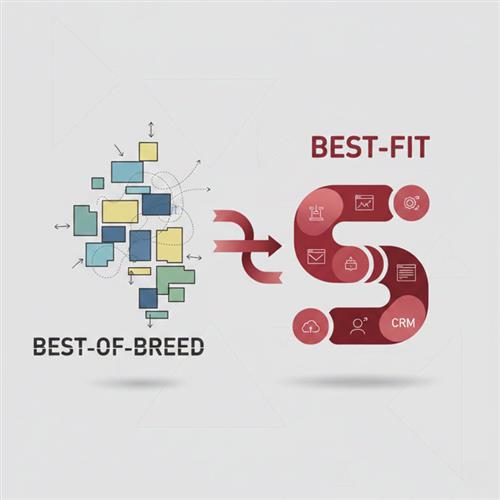









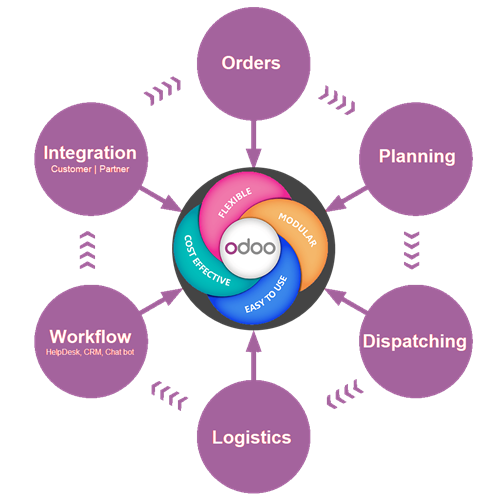



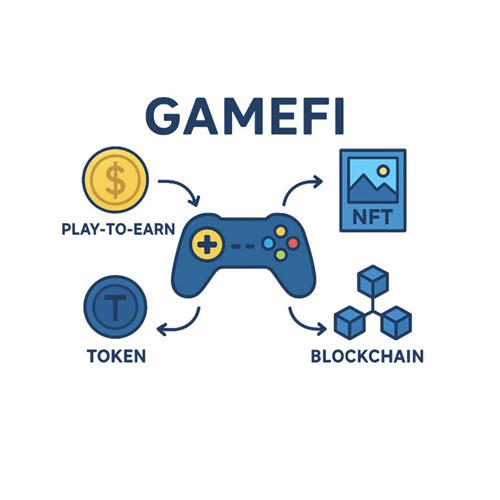



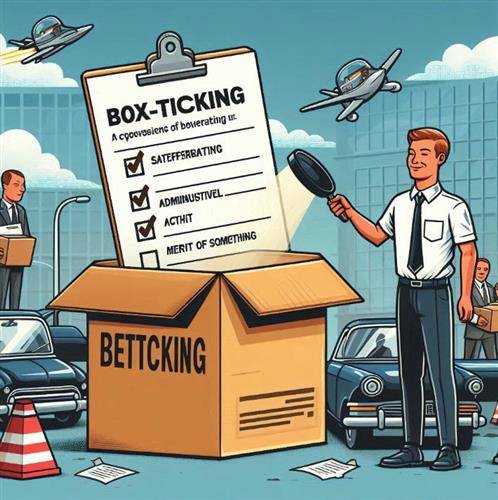
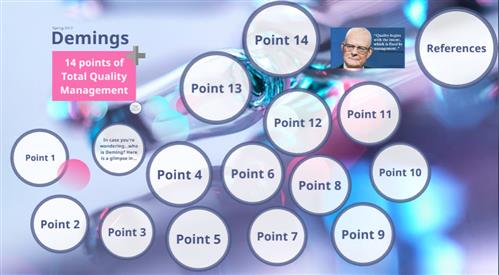











 Link copied!
Link copied!
 Mới cập nhật
Mới cập nhật